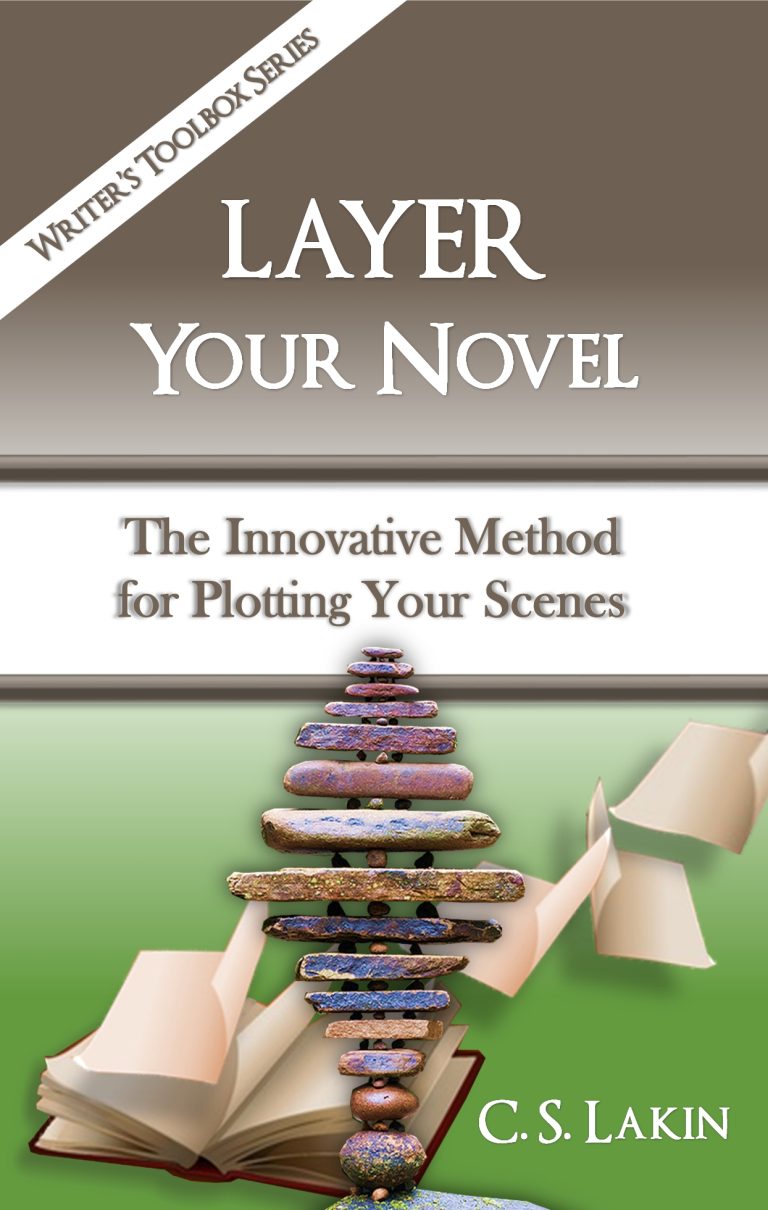Layering 10-20-30 Scenes in Your Novel
We’ve spent quite a few weeks taking a look at the ten key scenes a variety of writers have offered to share with readers of Live Write Thrive. As many respected writing instructors teach, it’s crucial that novelists get the important scenes worked out and laid out in the right place to ensure a solid framework for a story.
That won’t make up for a weak premise or boring characters. For this ten-key-scene framework to hold up your story, you need a strong premise. You need a compelling character going after a goal in a passionate way. You need high stakes and lots of significant conflict. And to make your story memorable and one that will resonate with readers around the world and across decades, you need strong universal themes.
These are the four corner pillars of novel construction I drive home to writers year after year. Too many novels written by beginning writers don’t have a worthy premise—a premise worth writing hundreds of pages about. A premise a writer can or should expect readers to want to devote ten or more hours of their life to.
It All Hinges on the Premise
In other words, if your novel fails at the premise stage, it’s time to throw it out or rework it to make it worthy.
I’ve written at length about this in The 12 Key Pillars of Novel Structure. I crammed in thirty years of novel writing experience and wisdom gleaned from the top instructors. And then I crafted a workbook designed to kick your butt. I also put together a mini video course covering the four key corner pillars, because they’re so important! You can sign up for the course and go deep into these pillars here.
With hundreds of brainstorming questions, along with checklists, charts, mind-mapping examples, and additional worksheets, my workbook can help you take your cool idea and work it into a solid story. A story worthy of a novel.
It’s one thing to jump into Nanowrimo just to see if you can force yourself to pound out 50,000 words in a month. It’s another thing to write a terrific story.
Honestly, anyone—even those without any creativity or writing chops at all—can pump out a semblance of a novel if they set aside the time and apply butt glue.
But, like a lot of the novels produced during Nano, those novels aren’t going to have much potential. Some writers go on to revise and rewrite and whip that story into shape. And my guess is that some of those novels turn out pretty good.
Those would be the novels written by seasoned writers, writers who prepped ahead of time, and writers who already have a strong understanding of story structure.
Get Those 4 Corner Pillars Strong
So be sure to test your premise. Make sure your concept has a kicker—and a darn good one. Any idea—even a lame one—can be turned into a terrific novel if it gets morphed into a strong concept.
So, once we know we’ve got that killer concept worked out, along with the other three corner pillars of novel structure, we lay out those ten key scenes. From there, we layer.
Want to write a perfect scene every time? Download this PDF worksheet with 8 simple steps to success! Click Here to get your free worksheet and subscribe to the Novel-Writing Fast Track group!
I’ve shown you ways you can layer using subplots or ancillary plot threads with other characters. I’ve shown you ways to layer a romance novel centering on the 12 recommended romance scenes in romance structure.
I randomly chose to layers in groups of ten scenes because, frankly, it’s nice and neat. Some novels have fifty scenes; some have more than a hundred. But it makes sense to me to start with the most important ones and work down to the small ones—the ones that link the bigger scenes.
Or, revisiting the analogy I started with, we start filling the jar with big rocks, then drop in pebbles, then sand, then water. Then the jar is full.
A while back I shared my 20 layered scenes from my detective novel A Thin Film of Lies. I’m working on putting together a 10-20-30 breakdown of The Da Vinci Code, mostly because it’s one of the top-selling novels in history.
For now, though, I’ll show you how I added in 10 more scenes (sand) over the 20 previously laid out.
Here is the chart once more. This time, I’m only putting in bold scenes 21-30. The first 10 are the foundational scenes, inserted in the right places in the framework. The next 10 pertain to the subplot. And while you don’t need exactly 10 subplot scenes, again, this is just done to give a simple template or method. Veer as you wish, but make it work best for the story you are telling.
I’ve noted in bold this “30” layer—the additional 10 scenes I’m adding in. Take a look at how these scenes bridge the bigger ones—essentially filling in those spaces.
What purpose do those additional scenes have? They should show the reaction to the previous action. They might be the processing that follows a reaction. Or they might be the decision that follows the processing.
In other words, you need to be keenly aware of the natural action-reaction-process-decision cycle. Your characters should act naturally, and sometimes this process all takes place in only a part of a scene; other times this process covers many scenes. And those are often the “filler” scenes.
Make sense?
Once you get this nailed, you should be able to grab any great novel and chart it out. You should find these key scenes are in just the right places, with layered subplots or plot threads, and with this “bridging” scenes filling in between them. Or layering over them.
Rocks or layers—visualize whatever works for you. But use the method to help you craft a solid story.
So here’s my chart (and remember, the numbering relates to the layering, but the scenes are laid out in order as the story unfolds). We’re going deep here!
#1 – Setup. Introduce protagonist in her world. Establish her core need. Set the stage, begin building the world, bring key characters on stage. After prologue setting up Libby’s death, we meet Fran Anders, homicide detective, called to the scene of the hit-and-run. She gets an anonymous call while there stating this was murder.
#21 – Meet Alisa, the wife of the suspected murderer. Begin subplot of her character. Set up tension in marriage, letters she gets from “Libby” before she’s killed.
#11 – introduction of subplot. Set up the situation between the characters to show the existing tension and attitudes that is causing conflict. Fran is concerned about her son’s behavior. They are disconnected, and the tenth anniversary of her husband’s vanishing is approaching. He’s having problems with kids at school.
#2 – Turning Point #1 (10%): inciting incident. Fran meets Mike Jepson—he’s the suspect, and she now starts investigating him. He claims he’s innocent.
#22 – More development in the investigation. Mike and Alisa have been interrogated. Alisa claims she caused the dent in the car. Fran wants Ident to check out the bumper.
#12 – Show how the inciting incident affects the subplot. It may trigger it, bring it to the forefront. Have something initially happen with the subplot to bring in problems and complications. Fran goes as chaperone on a class trip with son. At the park, she stumbles upon a drug sale gone violent that involves a couple of Trevor’s classmates and intervenes. Trevor is angry and embarrassed at her mother’s cop actions.
#3 – Pinch Point #1 (33% roughly): Give a glimpse of the opposition’s power, need, and goal as well as the stakes. Alisa secretly meets with Mike’s best friend, finds out Mike had had an affair years ago. Trust erodes. Alisa decides to investigate Mike’s claim he was at the club nights. (She acts as an antagonist to him and so she here is the opposition at this juncture.)
#23 – Fran questions an acquaintance of the deceased and learns key info that advances the investigation.
#13 – New subplot development that mirrors or is opposite of the main plot. In other words, show what key opposition your protagonist is facing and how she feels about it (a mirroring pinch point, in essence). Fran is called into school. Trevor is in the principal’s office, accused of hacking the school’s computers to change grades. He swears he’s innocent but evidence proves otherwise. Parallels Fran’s case, with Jepson arrested for hit-and-run and swearing he’s innocent. [We later see a short bit showing Fran set up an IT expert to go to the school and investigate the claim.]
#4 – Twist #1: Something new happens: a new ally, a friend becomes a foe. New info reveals a serious complication to reaching the goal. Protagonist must adjust to change with this setback. This twist pertains to the main plot. Mike finds items planted in his car from Libby. He’s starting to lose it. He’s not the protagonist, but he is the main character in the main plot. Alisa now doesn’t believe his innocence anymore. Cops come and check out the dent in the car.
#24 – Alisa moves out. Mike begs his friend to help him. Things look bleak for Mike.
#14 – Progress with the subplot. Similar to the main plot, the character is trying to deal with the subplot issues, complications, and setbacks. Tension builds as things are getting more difficult or problematic. Fran plays softball with coworkers. Reveals the backstory about her marriage, her husband leaving without a word ten years ago, that ten-year anniversary looming, and how it ties in with her disconnect with Trevor, how she’s tried to be the best mom but feels she’s failed.
#25 – A mother at the day care where Alisa works (DeeDee) suddenly becomes her BFF and takes her to lunch.
#5 – The midpoint (50%): No turning back. Important event that propels the story forward and solidifies the protagonist’s determination to reach her goal. “I’ll never go hungry again!” Fran has to arrest Mike. She doesn’t know if he’s guilty but she has no choice. Mike hires a PI from jail to help him. His life and marriage is in ruins.
#15 – Things start coming to a head and creating high tension with the subplot. Now that the protagonist is committed to going all-in after her goal, the subplot adds stress to her load. Fran is home. Daughter Megan arrives distraught. Her boyfriend broke up with her, feels she’s so unlovable. This unleashes Fran’s insecurities and loneliness, and emphasizes Fran’s need to be perfect and please everyone, never make a mistake.
#6 – Pinch Point #2 (62% roughly): The opposition comes full force. Time to buckle down and fight through it. Mike meets with a lawyer who tells him there’s no hope. Mike swears he’s innocent. Falls apart. Deedee (who is truly the nemesis in the story) worms her way into Alisa’s home and life and starts drugging her and manipulating her while Mike is in jail.
#26 – Mike’s lawyer pressures Mike to get through to Alisa. The lawyer is not on his side and paints a bleak picture. Alisa is falling hard under Deedee’s manipulation.
#16 – Developments with the subplot reach critical mass. Things are falling apart, looking hopeless. Fran doesn’t believe her son is innocent—all evidence proves he hacked into the school’s computer. Their relationship is threatened to break.
#7 – Twist 2: An unexpected surprise giving (false?) hope. The goal now looks within reach. A mentor gives encouragement, a secret weapon, an important clue. The PI Mike’s hired finds clues to who is framing him. He has a name and now all evidence is showing she is the culprit. But she can’t be found. #27 – Alisa works up strength to meet with Fran and talk. Fran gets her to turn back to God and this moves Alisa to give Mike a chance to explain.
#17 – Subplot feels at a standstill. Protagonist has no time to deal with it and so this creates more tension. Or something in the subplot could provide the help, insight, clue the protagonist needs to push harder to the goal. Fran can’t get through to Trevor and she has no time to deal with him.
#27 – Alisa visits Mike, she believes in his innocence. PI is trying to find DeeDee.
#8 – Turning Point #4 (75%): Major setback. All is lost and hopeless. Time for final push. The identity of Mike’s nemesis is clear but she can’t be found. His arraignment is coming up. He dumps the bad lawyer and gets a new one.
#18 – Same issues with the subplot. Seems unresolvable. Something happens that closes doors. Or the subplot might be resolved outwardly, but the desired emotional state is illusive. Fran finds Trevor at the park. She tries to talk to him. She has good news—turns out, due to her efforts, that evidence proves Trevor was set up (just like Jepson). He gets angry—she didn’t believe he was innocent even though he insisted he was. He accuses her of not having faith in him. She mentions that his dad leaving is at the heart of all his pain. He feels like he’s a loser, and confesses that he believes that’s why Dad left. Then storms off. This starts Fran’s descent into emotional darkness.
#28 – Alisa, shocked, discovers her house guest is Mike’s nemesis. Deedee attacks Alisa and leaves her for dead, heading to the arraignment.
#9 – Turning Point #5 (76-99%): The climax in which the goal is either reached or not; the two MDQs are answered. Mike is exonerated in court when evidence proves he didn’t kill Libby. Deedee shows up in the courtroom about to mess with Mike further.
#29 – Mike ends up killing Deedee in the courthouse parking lot, then is taken into custody. Big twist at the end that puts him back in jail.
#19 – The key scene that resolves the subplot in a completely satisfying, full way. The character has achieved the emotional resolution she’s wanted from the start. After the main plot climax, Fran leaves the new crime scene and arrives home with blood on her clothes. Trevor freaks at the sight, and Fran is feeling completely vulnerable. Today is the tenth anniversary of her husband leaving. Fran and Trevor have the healing heart-to-heart when Fran breaks down, blames herself for hubby leaving, for being a terrible mom, and realizes she’s tried to be the perfect mom and that her efforts have backfired.
#10 – The aftermath (90-99%): The wrap-up at the end. Denoument, resolution, tie it all in a pretty knot. The wrap-up of the case for Fran. She’s helped Mike so he won’t be in jail long. And she’s helped Alisa return to God. For Fran, it’s all wrapped up.
#30 – Alisa accepts the outcome. Her character arc comes to completion. Mike has changed, and there is hope now for their marriage. Loose ends are tied up actually and emotionally.
#20 – A final, parting shot of the happy result of the subplot wrapped up. This could be included in the last scene (above) as the two plot elements merge together, or they might be separate scenes within the final chapter(s). Three months later Mike is out of jail. But the case is resolved, and Alisa and Mike reunite and heal. Just as Fran and Trevor have healed their relationship.
So, while there are lots more scenes in my novel, I hope you can see how this next layer brings in the additional scenes that advance the main plot, complicate, and resolve. Some of the scenes are processing. Some are ones in which characters make new decisions. Some are new actions based on those decisions.
So study well the action-reaction cycle. Read great novels that portray characters in this natural behavior. This will go far to help you create the scenes you need to work as the sand that fills in the spaces between the pebbles.
While this may seem crazy and complicated, it really isn’t. If you start with those ten key scenes and layer in the next most important scenes, you will keep adding onto a strong framework. And a solidly built structure won’t easily collapse.
Challenge: break down your favorite novel. As you skim through the book, jot down the summary of each scene—maybe one or two sentences. Then, once you have all the scenes written down, try to pull out the 10-20-30 scenes in layers.
See what types of scenes are used to bridge between the key scenes. Pay attention to which scenes are action, reaction, processing, or new action. I’ll bet you you’ll learn a lot by doing this.
I’ll be taking a break from all this scene-layering to jump into character types and archetypes for a while. If you still have questions, contact me or post in the comments. And don’t forge ahead on your novel without considering having me review your chart!
Thoughts on all this? Does this help you see how you can take your novel to a higher level and create a stronger, richer story?












I feel really dense. Writing historical fiction, so scenes follow time line of events. Find my characters seldom do what I planned. I always see how some choice creates more tension, better story, so next scene is somewhere other than planned, with different characters and conflicts. Have continued research and constantly coming up with new ideas for him (and her) to meet another historical character, which needs new scene, which needs new problem, etc. Figure I just have to finish it and go back and drop the scenes that don’t really contribute to the forward motion of plot and premise. They are all demonstrative of the premise, but can get caught in a lot of political jabber or non-essentials that slow things down. Just cannot figure out how I could have planned the scenes other than VERY loosely before writing.
I think if you try using the ten key scene chart and one of the second layer charts in the Layer Your Novel book, you’ll find it so much easier to get the scenes in the right places. You can still add in characters and subplots and all that, but the framework of the novel needs to be strong first.
Using this outline where would the key event and plot point one fall into place? I’ve read the first plot point should come at the 25% mark, and the key event either comes right before then or simultaneously with plot point one. You don’t include either. Just curious as to why not?
Hi, I don’t use those terms (plot points, etc.). They can be confusing, specifically because they are usually couched in acts (end of first act, etc.), and I don’t believe writers should blindly follow a three-act structure. If you look at Layer Your Novel, you’ll see how the ten key scenes lay out and the five turning points. The first turning point (inciting incident or opportunity) falls around the 10% mark or earlier. The second turning point (door of no return) is at the 25% mark, where the goal is fixed. I don’t know what you mean by “key event,” since there are lots of key events in a novel.
hello,
the key event and first plot point are terms that K. M. Weiland uses on her blog. She sets the key event just before the first plot point. It keeps a clean line to follow in organizing the novel.